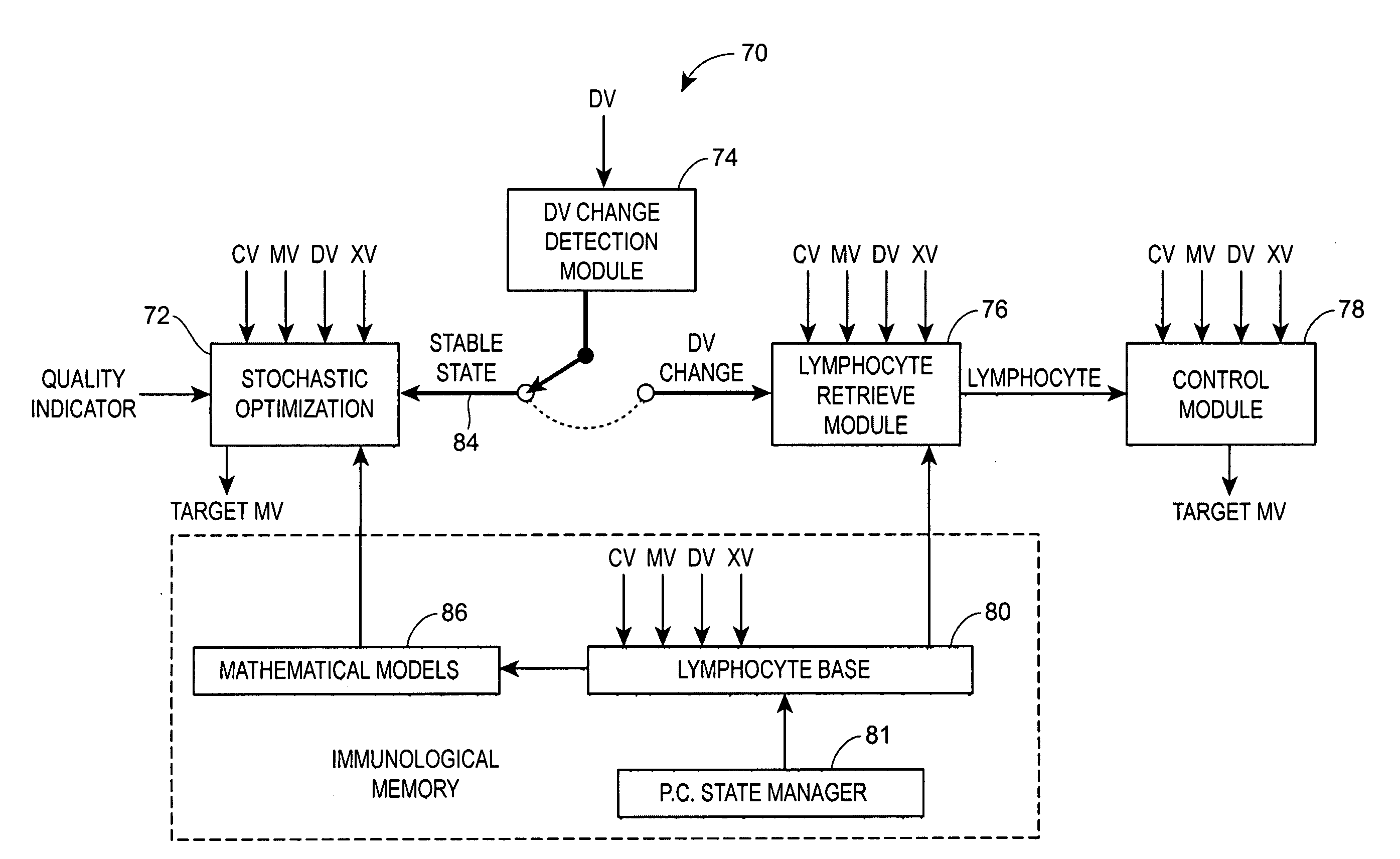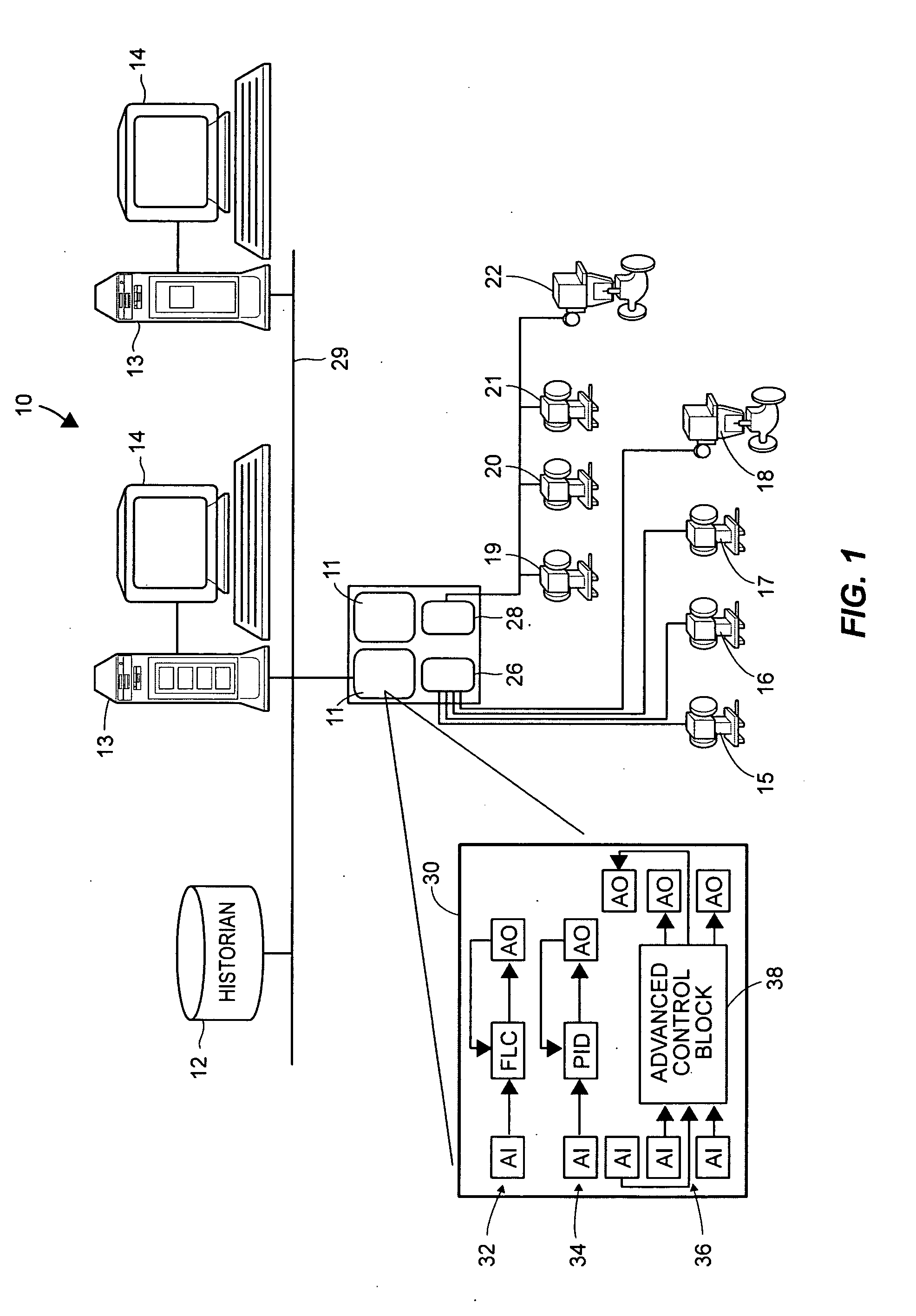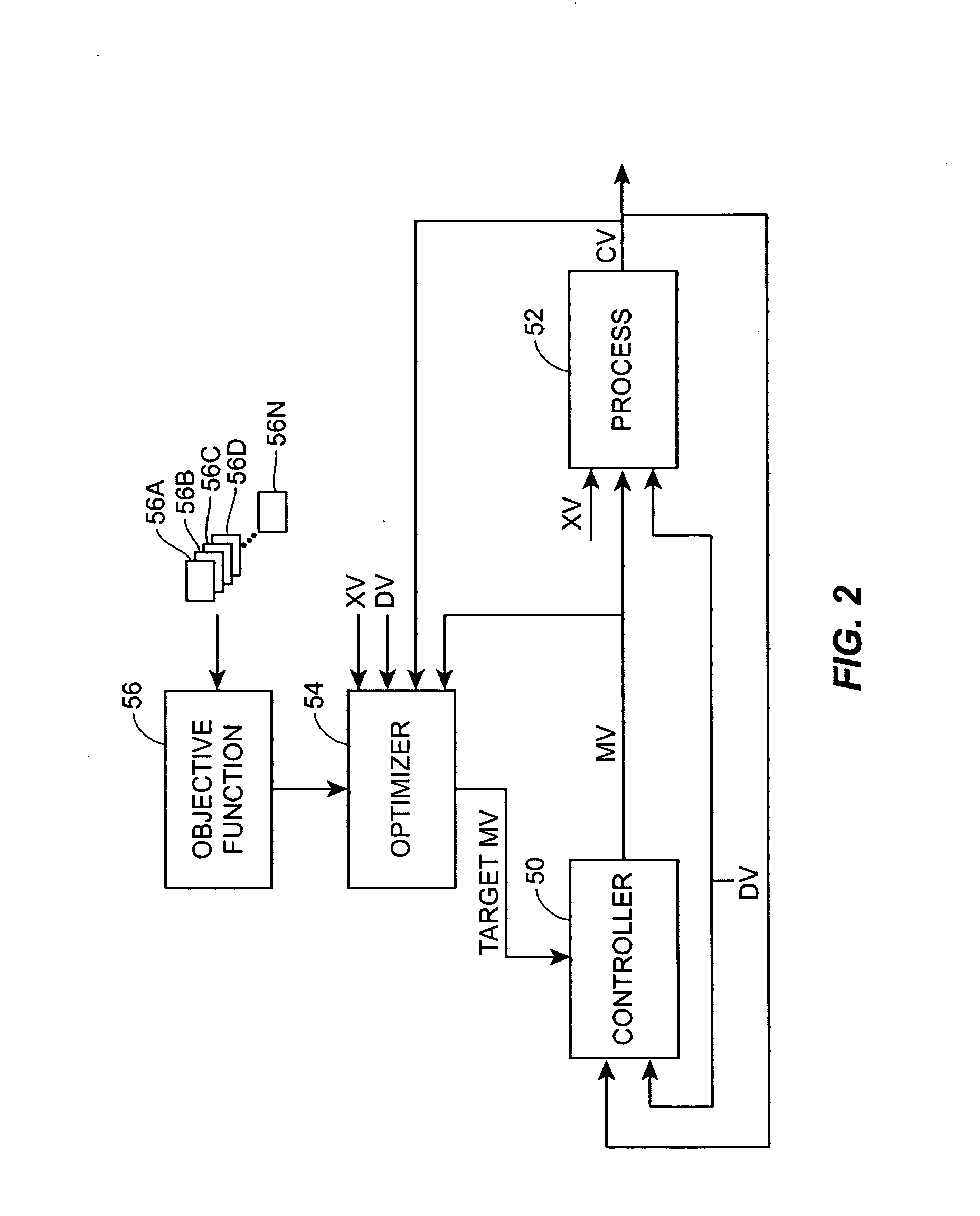Process control and optimization technique using immunological concepts
a technology of immunological concepts and optimization techniques, applied in the direction of motor/generator/converter stoppers, dynamo-electric converter control, instruments, etc., can solve the problems of less efficiency, more raw materials than necessary, and more emissions than necessary, so as to increase the efficiency or effectiveness of the optimizer
- Summary
- Abstract
- Description
- Claims
- Application Information
AI Technical Summary
Benefits of technology
Problems solved by technology
Method used
Image
Examples
Embodiment Construction
[0024]Referring now to FIG. 1, a process control system 10 includes a process controller 11 communicatively connected to a data historian 12 and to one or more host workstations or computers 13 (which may be any type of personal computers, workstations, etc.), each having a display screen 14. The controller 11 is also connected to field devices 15-22 via input / output (I / O) cards or devices 26 and 28. The data historian 12 may be any desired type of data collection unit having any desired type of memory and any desired or known software, hardware or firmware for storing data and may be separate from (as illustrated in FIG. 1) or a part of one of the workstations 13. The controller 11, which may be, by way of example, the Ovation® controller sold by Emerson Process Management Power and Water Solutions, is communicatively connected to the host computers 13 and to the data historian 12 via, for example, an Ethernet connection or any other desired communication network 29. The communicat...
PUM
 Login to View More
Login to View More Abstract
Description
Claims
Application Information
 Login to View More
Login to View More - R&D
- Intellectual Property
- Life Sciences
- Materials
- Tech Scout
- Unparalleled Data Quality
- Higher Quality Content
- 60% Fewer Hallucinations
Browse by: Latest US Patents, China's latest patents, Technical Efficacy Thesaurus, Application Domain, Technology Topic, Popular Technical Reports.
© 2025 PatSnap. All rights reserved.Legal|Privacy policy|Modern Slavery Act Transparency Statement|Sitemap|About US| Contact US: help@patsnap.com



